-
84 results in Exploration of NeuroscienceSort byMost Cited
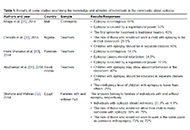 Stigma and psychosocial problems in patients with epilepsyOpen AccessReviewEpilepsy, a prevalent neurological disorder, is characterized by chronic seizures resulting from abnormal electrical activity in the brain. Adequate medical treatment allows roughly 70% of patients [...] Read more.Kubra YeniPublished: December 06, 2023 Explor Neurosci. 2023;2:251–263
Stigma and psychosocial problems in patients with epilepsyOpen AccessReviewEpilepsy, a prevalent neurological disorder, is characterized by chronic seizures resulting from abnormal electrical activity in the brain. Adequate medical treatment allows roughly 70% of patients [...] Read more.Kubra YeniPublished: December 06, 2023 Explor Neurosci. 2023;2:251–263
DOI: https://doi.org/10.37349/en.2023.00026
This article belongs to the special issue Epilepsy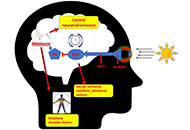 Neuropharmacologic modulation of the melatonergic systemOpen AccessReviewThe circadian rhythm is a critical system that governs an organism’s functions in alignment with the light-dark cycle. Melatonin release from the pineal gland plays a crucial role in regulating th [...] Read more.Utku Aykan ... Canan UluogluPublished: December 22, 2023 Explor Neurosci. 2023;2:287–306
Neuropharmacologic modulation of the melatonergic systemOpen AccessReviewThe circadian rhythm is a critical system that governs an organism’s functions in alignment with the light-dark cycle. Melatonin release from the pineal gland plays a crucial role in regulating th [...] Read more.Utku Aykan ... Canan UluogluPublished: December 22, 2023 Explor Neurosci. 2023;2:287–306
DOI: https://doi.org/10.37349/en.2023.00029
This article belongs to the special issue Circadian Rhythm and Melatonin Updates in mechanical thrombectomyOpen AccessReviewStroke is a leading cause of morbidity and mortality. The advent of mechanical thrombectomy has largely improved patient outcomes. This article reviews the features and outcomes associated with aspi [...] Read more.Kevin Pierre ... Brandon Lucke-WoldPublished: December 30, 2022 Explor Neurosci. 2022;1:83–99
Updates in mechanical thrombectomyOpen AccessReviewStroke is a leading cause of morbidity and mortality. The advent of mechanical thrombectomy has largely improved patient outcomes. This article reviews the features and outcomes associated with aspi [...] Read more.Kevin Pierre ... Brandon Lucke-WoldPublished: December 30, 2022 Explor Neurosci. 2022;1:83–99
DOI: https://doi.org/10.37349/en.2022.00007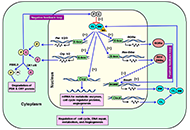 Impact of circadian clock dysfunction on human healthOpen AccessReviewAll living organisms exhibit circadian rhythms. Humans show circadian rhythm of the different physiological functions such as sleep-wake cycle, core body temperature, feeding behavior, metabolic act [...] Read more.Saptadip Samanta, Sk Asif AliPublished: September 29, 2022 Explor Neurosci. 2022;1:4–30
Impact of circadian clock dysfunction on human healthOpen AccessReviewAll living organisms exhibit circadian rhythms. Humans show circadian rhythm of the different physiological functions such as sleep-wake cycle, core body temperature, feeding behavior, metabolic act [...] Read more.Saptadip Samanta, Sk Asif AliPublished: September 29, 2022 Explor Neurosci. 2022;1:4–30
DOI: https://doi.org/10.37349/en.2022.00002
This article belongs to the special issue Circadian Rhythm and Melatonin Update for astrocytomas: medical and surgical management considerationsOpen AccessReviewAstrocytomas include a wide range of tumors with unique mutations and varying grades of malignancy. These tumors all originate from the astrocyte, a star-shaped glial cell that plays a major role in [...] Read more.Matthew Willman ... Brandon Lucke-WoldPublished: February 23, 2023 Explor Neurosci. 2023;2:1–26
Update for astrocytomas: medical and surgical management considerationsOpen AccessReviewAstrocytomas include a wide range of tumors with unique mutations and varying grades of malignancy. These tumors all originate from the astrocyte, a star-shaped glial cell that plays a major role in [...] Read more.Matthew Willman ... Brandon Lucke-WoldPublished: February 23, 2023 Explor Neurosci. 2023;2:1–26
DOI: https://doi.org/10.37349/en.2023.00009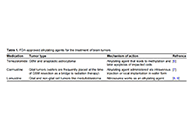 Therapeutic potential of extracellular vesicles in Parkinson’s diseaseOpen AccessReviewGlobally, the incidence of Parkinson’s disease (PD) is increasing faster than other neurodegenerative disorders. Neuropathologically, PD is characterized by the loss of dopaminergic neurons in the [...] Read more.Michelli Ramires Teixeira ... Rodrigo Pinheiro AraldiPublished: June 29, 2023 Explor Neurosci. 2023;2:106–122
Therapeutic potential of extracellular vesicles in Parkinson’s diseaseOpen AccessReviewGlobally, the incidence of Parkinson’s disease (PD) is increasing faster than other neurodegenerative disorders. Neuropathologically, PD is characterized by the loss of dopaminergic neurons in the [...] Read more.Michelli Ramires Teixeira ... Rodrigo Pinheiro AraldiPublished: June 29, 2023 Explor Neurosci. 2023;2:106–122
DOI: https://doi.org/10.37349/en.2023.00016
This article belongs to the special issue Extracellular Vesicles as Cell-based Therapeutics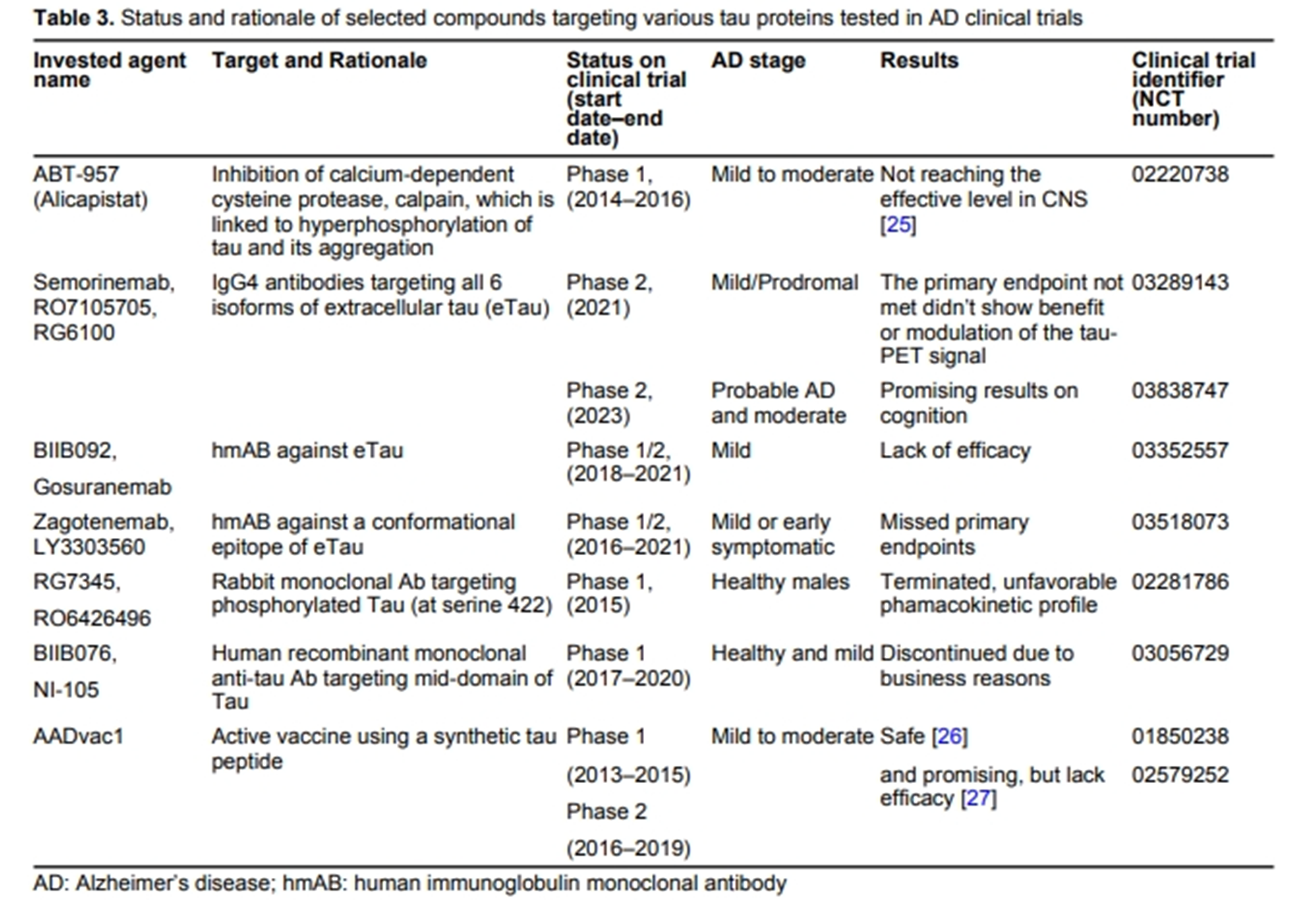 Current therapeutics for Alzheimer’s disease and clinical trialsOpen AccessReviewAlzheimer’s disease (AD) is a major type of dementia and neurodegenerative disease, characterized by memory loss and cognitive decline. Over decades, significant efforts have been dedicated to fin [...] Read more.Danqing Xiao, Chen ZhangPublished: June 27, 2024 Explor Neurosci. 2024;3:255–271
Current therapeutics for Alzheimer’s disease and clinical trialsOpen AccessReviewAlzheimer’s disease (AD) is a major type of dementia and neurodegenerative disease, characterized by memory loss and cognitive decline. Over decades, significant efforts have been dedicated to fin [...] Read more.Danqing Xiao, Chen ZhangPublished: June 27, 2024 Explor Neurosci. 2024;3:255–271
DOI: https://doi.org/10.37349/en.2024.00048
This article belongs to the special issue Alzheimer’s Disease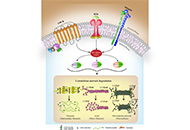 Connecting the ends: signaling via receptor tyrosine kinases and cytoskeletal degradation in neurodegenerationOpen AccessReviewReceptor tyrosine kinases (RTKs) are known to perform versatile roles in disease landscapes, which determine the fate of the cell. Although much has been discussed from the perspective of proliferat [...] Read more.Priyanka Sengupta ... Debashis MukhopadhyayPublished: February 20, 2024 Explor Neurosci. 2024;3:1–26
Connecting the ends: signaling via receptor tyrosine kinases and cytoskeletal degradation in neurodegenerationOpen AccessReviewReceptor tyrosine kinases (RTKs) are known to perform versatile roles in disease landscapes, which determine the fate of the cell. Although much has been discussed from the perspective of proliferat [...] Read more.Priyanka Sengupta ... Debashis MukhopadhyayPublished: February 20, 2024 Explor Neurosci. 2024;3:1–26
DOI: https://doi.org/10.37349/en.2024.00033
This article belongs to the special issue Alzheimer’s Disease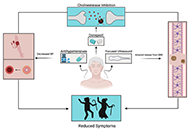 Investigation into the vascular contributors to dementia and the associated treatmentsOpen AccessReviewAs the average lifespan has increased, memory disorders have become a more pressing public health concern. However, dementia in the elderly population is often neglected in light of other health pri [...] Read more.Caroline Grace Davidson ... Brandon Lucke-WoldPublished: October 15, 2023 Explor Neurosci. 2023;2:224–237
Investigation into the vascular contributors to dementia and the associated treatmentsOpen AccessReviewAs the average lifespan has increased, memory disorders have become a more pressing public health concern. However, dementia in the elderly population is often neglected in light of other health pri [...] Read more.Caroline Grace Davidson ... Brandon Lucke-WoldPublished: October 15, 2023 Explor Neurosci. 2023;2:224–237
DOI: https://doi.org/10.37349/en.2023.00023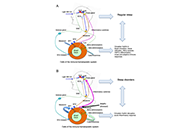 Circadian regulation of the immune-hematopoietic systemOpen AccessReviewEarth’s rotation generates the basic circadian rhythm of day and night to which all living organisms must adapt to survive. In mammals, this happens thanks to a central clock located in the suprac [...] Read more.Georges MaestroniPublished: June 30, 2023 Explor Neurosci. 2023;2:123–139
Circadian regulation of the immune-hematopoietic systemOpen AccessReviewEarth’s rotation generates the basic circadian rhythm of day and night to which all living organisms must adapt to survive. In mammals, this happens thanks to a central clock located in the suprac [...] Read more.Georges MaestroniPublished: June 30, 2023 Explor Neurosci. 2023;2:123–139
DOI: https://doi.org/10.37349/en.2023.00017
This article belongs to the special issue Circadian Rhythm and Melatonin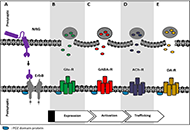 Neuregulins: subcellular localization, signaling pathways and their relationship with neuroplasticity and neurological diseasesOpen AccessReviewNeuregulins (NRGs) and their cognate ErbB receptors (ErbB2–ErbB4) constitute a vast group of proteins encoded by six different genes (NRG1–6) and many isoforms with critical [...] Read more.Marines Longart ... Juan Carlos MartínezPublished: September 29, 2022 Explor Neurosci. 2022;1:31–53
Neuregulins: subcellular localization, signaling pathways and their relationship with neuroplasticity and neurological diseasesOpen AccessReviewNeuregulins (NRGs) and their cognate ErbB receptors (ErbB2–ErbB4) constitute a vast group of proteins encoded by six different genes (NRG1–6) and many isoforms with critical [...] Read more.Marines Longart ... Juan Carlos MartínezPublished: September 29, 2022 Explor Neurosci. 2022;1:31–53
DOI: https://doi.org/10.37349/en.2022.00003 Antinociceptive effect and anti-inflammatory activity of 1,4-naphthoquinones in miceOpen AccessOriginal ArticleAim: The ability of synthetic 1,4-naphthoquinones (1,4-NQs) to prevent adenosine triphosphate (ATP)-induced and purinergic P2X7 receptor (P2X7R) mediated inflammation in macrophage and neurodegen [...] Read more.Sergei Kozlovskiy ... Dmitry AmininPublished: February 22, 2024 Explor Neurosci. 2024;3:39–50
Antinociceptive effect and anti-inflammatory activity of 1,4-naphthoquinones in miceOpen AccessOriginal ArticleAim: The ability of synthetic 1,4-naphthoquinones (1,4-NQs) to prevent adenosine triphosphate (ATP)-induced and purinergic P2X7 receptor (P2X7R) mediated inflammation in macrophage and neurodegen [...] Read more.Sergei Kozlovskiy ... Dmitry AmininPublished: February 22, 2024 Explor Neurosci. 2024;3:39–50
DOI: https://doi.org/10.37349/en.2024.00035
This article belongs to the special issue Neuropathic Pain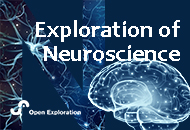 Molecular and cellular processes underlying Unverricht-Lundborg disease—prospects for early interventions and a cureOpen AccessReviewA short overview of the main features of progressive myoclonus epilepsies (PMEs), such as Lafora disease (LD), neuronal ceroid lipofuscinoses (NCLs), and myoclonus epilepsy with ragged-red fibers (M [...] Read more.Eva ŽerovnikPublished: July 18, 2024 Explor Neurosci. 2024;3:295–308
Molecular and cellular processes underlying Unverricht-Lundborg disease—prospects for early interventions and a cureOpen AccessReviewA short overview of the main features of progressive myoclonus epilepsies (PMEs), such as Lafora disease (LD), neuronal ceroid lipofuscinoses (NCLs), and myoclonus epilepsy with ragged-red fibers (M [...] Read more.Eva ŽerovnikPublished: July 18, 2024 Explor Neurosci. 2024;3:295–308
DOI: https://doi.org/10.37349/en.2024.00051
This article belongs to the special issue Epilepsy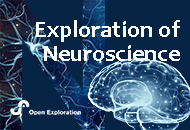 Nutritional treatment with the ketogenic diet in children with refractory epilepsy: a narrative reviewOpen AccessMini ReviewThe two mainstays of therapy for refractory epilepsy are medication and surgery. Child behavioral and cognitive aspects of epilepsy can be improved by using a specialized dietary regimen such as the [...] Read more.Srilaxmi Vityala ... Swathi NenavathPublished: October 30, 2023 Explor Neurosci. 2023;2:245–250
Nutritional treatment with the ketogenic diet in children with refractory epilepsy: a narrative reviewOpen AccessMini ReviewThe two mainstays of therapy for refractory epilepsy are medication and surgery. Child behavioral and cognitive aspects of epilepsy can be improved by using a specialized dietary regimen such as the [...] Read more.Srilaxmi Vityala ... Swathi NenavathPublished: October 30, 2023 Explor Neurosci. 2023;2:245–250
DOI: https://doi.org/10.37349/en.2023.00025
This article belongs to the special issue Epilepsy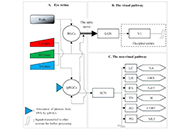 Effects mediated by melatonin and cortisol of artificial light and noise, alone and in combination, on sleep and healthOpen AccessReviewAs an integral part of human chronobiology, the circadian system plays a crucial role in regulating key biological functions, including sleep and the intricate hormonal rhythms of melatonin (MLT) an [...] Read more.Nahum M. GabinetPublished: September 13, 2024 Explor Neurosci. 2024;3:382–417
Effects mediated by melatonin and cortisol of artificial light and noise, alone and in combination, on sleep and healthOpen AccessReviewAs an integral part of human chronobiology, the circadian system plays a crucial role in regulating key biological functions, including sleep and the intricate hormonal rhythms of melatonin (MLT) an [...] Read more.Nahum M. GabinetPublished: September 13, 2024 Explor Neurosci. 2024;3:382–417
DOI: https://doi.org/10.37349/en.2024.00057
This article belongs to the special issue Circadian Rhythm and Melatonin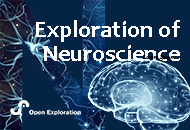 Mesenchymal stem cell stroke therapy: current limitations in its clinical translationOpen AccessPerspectiveFor more than a decade now, research studies, proof of concept work, and clinical trials have endeavored to understand how mesenchymal stem cells might be used to help protect, repair, and/or regene [...] Read more.Ylenia Pastorello, Mark SlevinPublished: June 28, 2023 Explor Neurosci. 2023;2:98–105
Mesenchymal stem cell stroke therapy: current limitations in its clinical translationOpen AccessPerspectiveFor more than a decade now, research studies, proof of concept work, and clinical trials have endeavored to understand how mesenchymal stem cells might be used to help protect, repair, and/or regene [...] Read more.Ylenia Pastorello, Mark SlevinPublished: June 28, 2023 Explor Neurosci. 2023;2:98–105
DOI: https://doi.org/10.37349/en.2023.00015
This article belongs to the special issue Neuroinflammation in the Ageing and the Injured Brain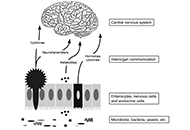 Modify gut microbiome in autism: a promising strategy?Open AccessReviewThe gut microbiota and dysbiosis have been implicated in various metabolic diseases and gastrointestinal disorders. Recently, there has been growing evidence suggesting the influence of gut microbio [...] Read more.Jean Demarquoy ... Caroline DemarquoyPublished: August 31, 2023 Explor Neurosci. 2023;2:140–152
Modify gut microbiome in autism: a promising strategy?Open AccessReviewThe gut microbiota and dysbiosis have been implicated in various metabolic diseases and gastrointestinal disorders. Recently, there has been growing evidence suggesting the influence of gut microbio [...] Read more.Jean Demarquoy ... Caroline DemarquoyPublished: August 31, 2023 Explor Neurosci. 2023;2:140–152
DOI: https://doi.org/10.37349/en.2023.00018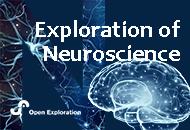 Multiple sclerosis with comorbidity depression and its association with vitamin D deficiency in a narrative review of the current literatureOpen AccessReviewOver the past decade, knowledge of the pathophysiology and immunology of multiple sclerosis (MS) and depression, and the complex links to vitamin D (VitD) balance, has increased rapidly. Both diseas [...] Read more.Hans-Klaus GoischkePublished: August 31, 2023 Explor Neurosci. 2023;2:160–192
Multiple sclerosis with comorbidity depression and its association with vitamin D deficiency in a narrative review of the current literatureOpen AccessReviewOver the past decade, knowledge of the pathophysiology and immunology of multiple sclerosis (MS) and depression, and the complex links to vitamin D (VitD) balance, has increased rapidly. Both diseas [...] Read more.Hans-Klaus GoischkePublished: August 31, 2023 Explor Neurosci. 2023;2:160–192
DOI: https://doi.org/10.37349/en.2023.00020
This article belongs to the special issue Novel Therapeutic Approaches for the Treatment of Depression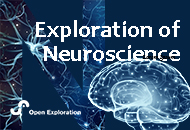 Recent developments and future perspectives of neuropathologyOpen AccessPerspectiveThis brief statement describes some recent achievements of neuropathological research, with the focus on Alzheimer’s and other age-related diseases, neurodegenerative disorders (tauopathies, synucleinopathies), multimorbidity of [...] Read more.Kurt A. JellingerPublished: September 30, 2022 Explor Neurosci. 2022;1:54–60
Recent developments and future perspectives of neuropathologyOpen AccessPerspectiveThis brief statement describes some recent achievements of neuropathological research, with the focus on Alzheimer’s and other age-related diseases, neurodegenerative disorders (tauopathies, synucleinopathies), multimorbidity of [...] Read more.Kurt A. JellingerPublished: September 30, 2022 Explor Neurosci. 2022;1:54–60
DOI: https://doi.org/10.37349/en.2022.00004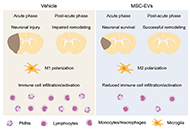 Neuroprotective and neurorestorative actions of mesenchymal stromal cell-derived small extracellular vesicles in the ischemic brainOpen AccessReviewIschemic stroke is a highly prevalent condition that frequently results in life-long disability and death. Considerable efforts have been made to establish treatments that prevent secondary ischemic [...] Read more.Chen Wang ... Dirk M. HermannPublished: October 09, 2022 Explor Neurosci. 2022;1:61–74
Neuroprotective and neurorestorative actions of mesenchymal stromal cell-derived small extracellular vesicles in the ischemic brainOpen AccessReviewIschemic stroke is a highly prevalent condition that frequently results in life-long disability and death. Considerable efforts have been made to establish treatments that prevent secondary ischemic [...] Read more.Chen Wang ... Dirk M. HermannPublished: October 09, 2022 Explor Neurosci. 2022;1:61–74
DOI: https://doi.org/10.37349/en.2022.00005
This article belongs to the special issue Extracellular Vesicles as Cell-based Therapeutics -
